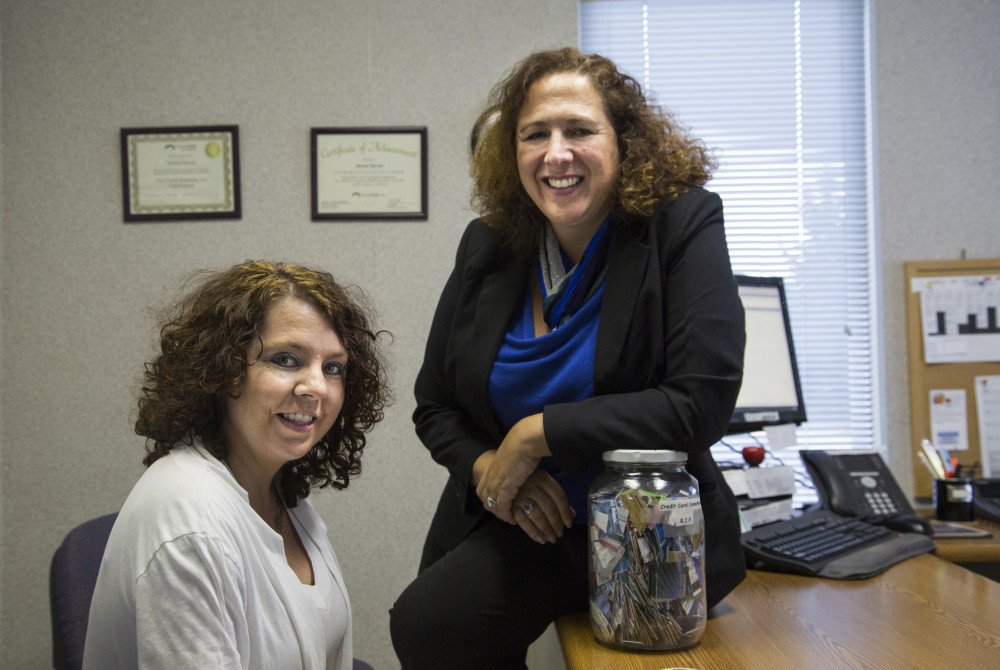By Susan Tompor
Detroit Free Press.
Tanya LaPrad’s story of dealing with about $20,000 in credit card debt has all the makings of CNBC show like “Til Debt Do Us Part” or a Suze Orman segment of “Can I Afford It?” where the answer is most definitely, “Denied.”
But LaPrad, 43, is willing to share bits and pieces of her drama because the Detroit-area mom eventually did find a way out.
She’s proud she has learned to stop saying, “Oh, well I’ll just charge it” when it comes to buying clothes for her two children.
Last year, her daughter, who was a senior in high school, used her own money from her job at Little Caesars Pizza to pay for her prom dress.
After working with a debt counselor, LaPrad paid off the Discover card, the JC Penney card and the rest of her credit card debt and now carries about $800 in debt on one credit card.
“She took charge of it. She was really committed to paying this debt down,” said Bettina Bartolo, a financial counselor for GreenPath Debt Solutions.
LaPrad was named the 2014 GreenPath Client of the Year after completing her debt management plan. Her story is worth hearing, even if it only motivates some consumers to simply stop and reconsider how they’re using credit cards. It’s far too easy to get into trouble charging groceries and clothes than many want to admit.
When LaPrad started working with GreenPath four years ago she faced interest charges alone of $358 a month. She went through a divorce and was making about $30,000 a year as a cardiovascular technician, as well as working part-time as a yoga and fitness instructor.
On her Discover card, LaPrad owed about $11,900, just $100 or so short of maxing out on a card with a $12,000 line of credit. The annual rate was 19.9 percent. It would have taken her 53 years to pay just that one card off by paying only the minimum of $235 a month.
As part of the debt management plan, GreenPath negotiated the rate on the Discover card down to 6.9 percent. But the minimum payment was not reduced.
Bartolo said each creditor has different policies for concessions. Some creditors might agree to reduce the minimum payment, too, with interest rates; others do not.
Under LaPrad’s plan, her total interest charges on the $20,000 in debt dropped to $108 a month from $358 a month after concessions. That freed up $250 to go toward principal and other bills each month.
LaPrad said it wasn’t easy making her payments each month. She paid $50 a month to GreenPath for the program. But she said the fee was worthwhile because she received substantially lower interest charges.
“I knew how much would be coming out each month, which helped with my budget.”
LaPrad also has faced a troubled mortgage and her monthly expenses exceeded her income by about $400 a month. Fortunately, she worked to negotiate a modification for her mortgage and received help through a community action agency that offers foreclosure prevention counseling.
Before her divorce, she put $10,000 of her husband’s debt on a newly opened, 0 percent rate credit card, in her name.
“He started charging groceries and more, and things got out of control,” she said. “It was a struggle. It was a control thing.”
During the marriage, she fell into a trap of trying to fix credit card problems by closing one credit card and opening another at ultra-low interest rates for a set time. But the charging continued, rates went higher, the money troubles got worse, and marriage problems grew.
In 2012, she might have given up on the debt plan when she was diagnosed with breast cancer.
She had lost time at work. But she felt she was so close to paying off those bills that she decided to keep going and never missed a debt management payment.
“It would have been so easy to say, ‘I’m done,'” she said.
Yet family and friends helped out with a fundraiser when she got sick; she got help with some bills; friends made dinners, which helped her tremendously.
“She was going to do it, no matter what,” Bartolo said.
Over the course of her debt management program, LaPrad sent in extra money whenever possible. LaPrad was able to pay off her debt in 33 months, more than two years earlier than originally expected.
“You have to budget everything,” LaPrad said. “I don’t spend extra on those extra things like I used to. I love to shop, and who doesn’t?”
But now she doesn’t buy shoes for herself as a pick-me-up. She doesn’t rush out to buy things for her daughter, who now attends the University of Toledo.
Instead, now that she’s healthy, she tries to pick up extra jobs to fill her time and add extra money to her wallet.
“It’s not a good feeling to be under that much debt,” she said.
___
ABOUT THE WRITER
Susan Tompor is the personal finance columnist for the Detroit Free Press.














































































































































































































































































































































































